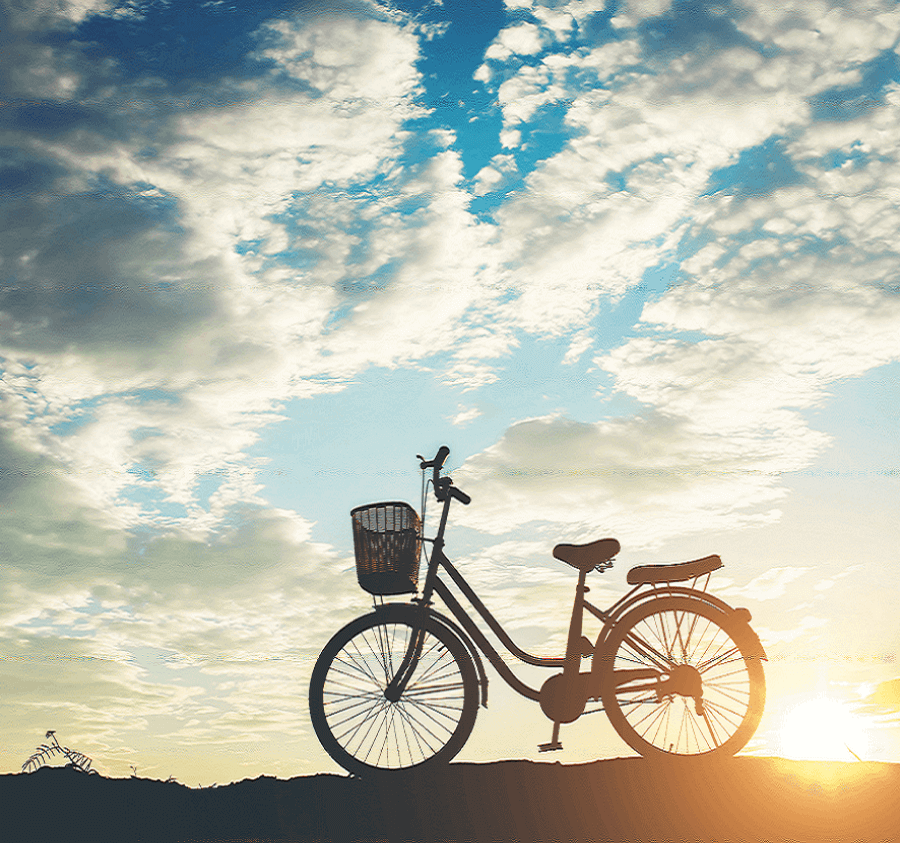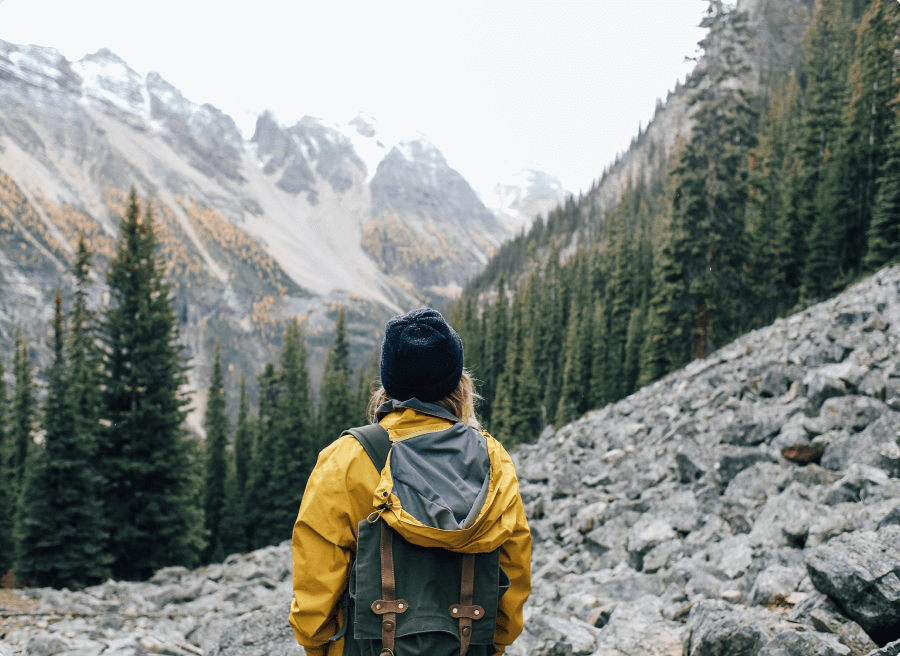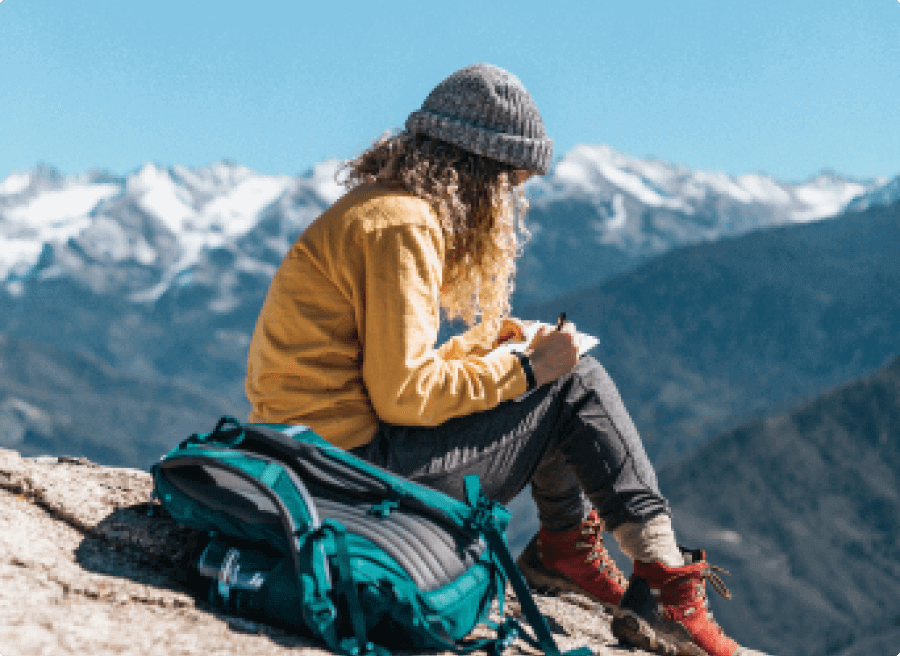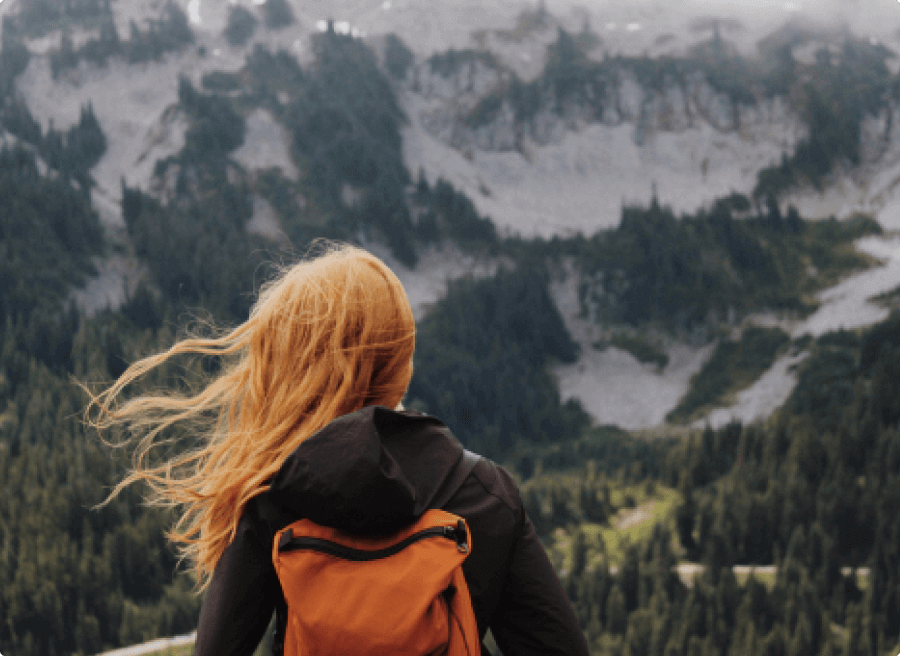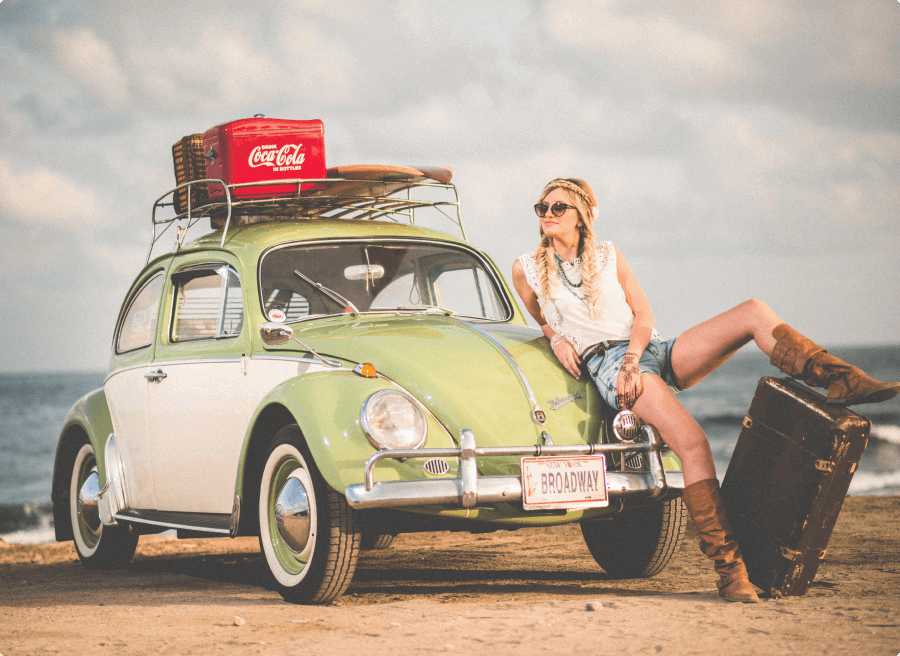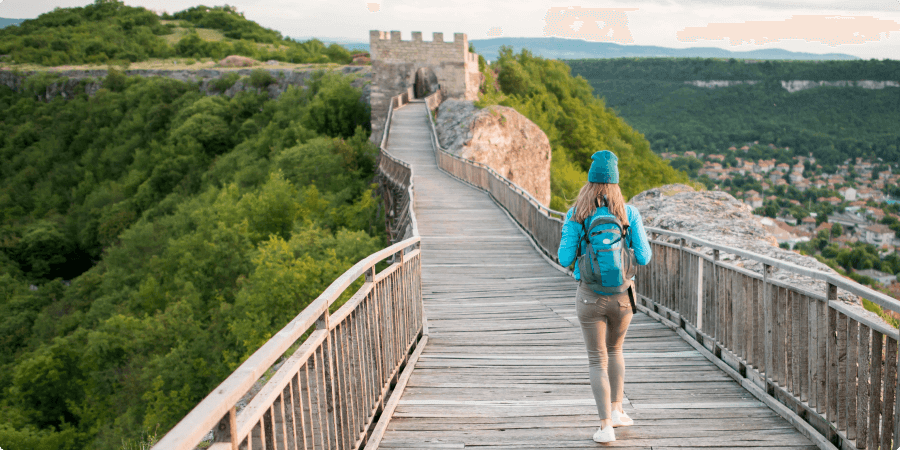Nestled in the Himalayas, Kashmir is often described as “paradise on earth.” Imagine waking up in a wooden houseboat on Dal Lake to the call of migratory birds, with snow-capped peaks framing the horizon. You step out onto the shikara (wooden boat) that gently rocks beneath you, paddled by a boatman in a Kashmiri pheran. The morning mist lifts to reveal emerald willow trees lining the shore, and the delicate scent of saffron fields wafts through the air. This is Kashmir’s magic – a blend of serene lakes, lush valleys, and rich culture that captivates every traveller. In this guide, we’ll take you from the classic must-see sights to hidden gems, ensuring you experience all the famous things in Kashmir that make a visit unforgettable.
Top Things to Do in Kashmir: Experiences You Shouldn’t Miss
Adventure Activities in Kashmir
Sledge Ride in Gulmarg and Sonmarg
When winter cloaks Kashmir in its pristine white blanket, sledging becomes one of the most thrilling and beloved snow activities. In Gulmarg and Sonmarg, children and adults alike glide through snow-covered paths on wooden sledges, pulled by locals or self-ridden on gentle slopes. This simple yet joyful activity allows you to truly experience the magic of Kashmiri winters. For first-timers, local guides are available to ensure both safety and fun.
ETV Bike Ride in Gulmarg and Sonmarg
For adventure seekers who want to experience the snowy terrain with a modern twist, ETV (all-terrain vehicle) bike rides offer the perfect solution. Available in both Gulmarg and Sonmarg, these rugged bikes are specially designed for navigating snow trails. The ride takes you through pine forests, gentle hills, and frozen landscapes, offering breathtaking views that are impossible to reach on foot. Helmets and gear are provided on-site.
Pony Rides Across the Valleys
Pony rides are a traditional mode of transport in Kashmir, especially for areas that are inaccessible by vehicles. Tourists often choose pony rides in Pahalgam, Sonmarg, or Aru Valley to reach meadows like Baisaran, often referred to as “Mini Switzerland.” The gentle pace of the pony allows you to soak in the surroundings — towering chinars, rolling green hills, and snow-capped peaks — while being guided by experienced handlers.
Signature Experiences in Kashmir
Shikara Ride on Dal Lake
A trip to Kashmir is incomplete without a Shikara ride on the world-famous Dal Lake in Srinagar. These handcrafted wooden boats, adorned with colourful upholstery and cushions, glide effortlessly through tranquil waters. As you drift past floating gardens, houseboats, and lotus-covered patches, the city’s Mughal charm unfolds before your eyes. Vendors in boats may even approach you selling handicrafts, saffron, kahwa, and flowers — a floating market experience unlike any other in India.
Culinary Delights: Famous Food of Kashmir
Rogan Josh
Among the many rich and aromatic dishes of Kashmiri cuisine, Rogan Josh stands out as a cultural icon. This slow-cooked lamb curry, prepared with yoghurt, dried Kashmiri chillies, and a blend of traditional spices, reflects the region’s Persian influences. Known for its deep red colour and tender meat, it is a staple in every Wazwan (a traditional multi-course Kashmiri feast) and a must-try for any food-loving traveller. You can find authentic Rogan Josh in local restaurants across Srinagar, Pahalgam, and Gulmarg.
Other notable dishes to try:
- Gushtaba – Minced mutton meatballs in a rich yoghurt gravy.
- Modur Pulav – A sweet Kashmiri saffron rice dish made with dry fruits.
- Kashmiri Kahwa – Traditional green tea infused with saffron, cardamom, and almonds.
Natural Beauty and Seasonal Highlights
Snowfall in Gulmarg and Sonmarg
One of the most magical experiences in Kashmir is witnessing fresh snowfall, especially in the regions of Gulmarg and Sonmarg during winter. As snowflakes silently blanket the pine forests and rooftops, the entire landscape transforms into a postcard-perfect setting. These areas are also hotspots for winter sports like skiing, snowboarding, and snowmobiling. Tourists often flock to Gulmarg’s Gondola ride, one of the world’s highest cable cars, for a panoramic view of the snow-laden Himalayas.
Best Time to Visit Kashmir: Tailored to Your Interests
Kashmir’s beauty changes with every season. The best time to visit truly depends on the kind of experience you’re seeking:
1. For Snowfall Enthusiasts (December to March):
This is the perfect window for those who wish to enjoy Kashmir’s winter wonderland. Popular destinations like Gulmarg and Sonmarg receive heavy snowfall, making it ideal for skiing, sledging, ETV biking, and enjoying cozy stays in wooden cottages.
2. For Apple Blossoms and Orchard Visits (April to July):
During this period, apple orchards bloom across Kashmir, particularly in areas like Sopore, Baramulla, and Shopian. The valley comes alive with floral beauty and fresh fruit markets. Tourists can visit orchards, interact with local farmers, and even taste fresh apples right from the tree.
3. For Lush Greenery and Alpine Meadows (April to October):
Spring and summer paint Kashmir in every shade of green. From Tulip Gardens in April to the full bloom of Betaab Valley and Pahalgam in July, this is the ideal season for sightseeing, photography, and nature walks. It’s also the best time for trekking and camping in areas like Tarsar Lake, Gurez Valley, and Yusmarg.
Local Handicrafts and Shopping
Kashmir is also known for its rich handicraft tradition. When visiting, make sure to shop for:
- Pashmina shawls
- Hand-knotted carpets
- Papier-mâché items
- Walnut wood carvings
- Kashmiri saffron and dried fruits
Visit the Lal Chowk Market, Polo View Market, and Residency Road in Srinagar for authentic souvenirs.
Natural Beauty: Lakes, Gardens, and Valleys
Dal Lake & Nigeen Lake

Dal Lake, in Srinagar, is Kashmir’s most iconic landmark. It’s a sprawling freshwater lake (18–22 km²) ringed by willow and chinar (plane) trees. Dal is “the second largest lake in Jammu and Kashmir, and the most visited place in Srinagar,” earning nicknames like the “Lake of Flowers” and “Jewel in the Crown of Kashmir”. On its shores lie the famed Mughal gardens of Shalimar and Nishat (see below), and colourful houseboats dot the water. Visitors often enjoy a morning shikara ride through the lake’s tranquil bays and among the “Raad” – the floating gardens made of soil mats that bloom with lotuses in July and August.

Across a narrow causeway lies Nigeen Lake, a quieter offshoot of Dal. Surrounded by poplar and willow groves with Shankaracharya Hill to the south, Nigeen is known as the “jewel in the ring” of Kashmir. Its deep blue waters are calmer than Dal’s, making it ideal for swimming and relaxation. You’ll still find houseboats and shikaras here, but often with fewer crowds. Along Nigeen’s shores, tourists can rent a shikara or stay in a deluxe houseboat to savour sunrise views over the Zabarwan Mountains. In winter, both lakes can freeze at –11°C, turning the landscape into a winter wonderland.
Mughal Gardens

Kashmir’s Mughal-era gardens are world-famous, blending Persian design with Himalayan scenery. Two stand out on Dal Lake’s eastern shores. Nishat Bagh, the “Garden of Joy,” was laid out in 1633 by Asif Khan (brother of Empress Nur Jahan). It’s a terraced garden of 12 levels with fountains cascading toward the lake. Sultan Jahangir reportedly admired Nishat Bagh so much that he ordered its water supply cut off, fearing its beauty! Today, you can stroll its cypress-lined paths and reflect pools, relishing views of Dal below and the Pir Panjal mountains beyond.

Nearby is Shalimar Bagh, built in 1619 by Emperor Jahangir. Known as the “Crown of Srinagar,” Shalimar features a grand marble pavilion and terraced lawns. Its Persian name, “Farah Baksh”, means “fountain of joy,” and it remains the high point of Mughal horticulture in the region. Both gardens open to the public, offering leisurely mornings beneath mulberry trees and ornamental fountains, with Dal Lake shimmering at their feet. (Don’t miss Chashme Shahi and Harwan gardens nearby for more botanical bliss.)
Gulmarg (Meadow of Flowers)

About 50 km from Srinagar, Gulmarg translates to “Meadow of Flowers” in Kashmiri, and the name is apt. In summer, alpine meadows carpeted with wildflowers stretch to the horizon under the Pir Panjal peaks. In winter, it transforms into India’s premier ski resort. The pièce de résistance is the Gulmarg Gondola: a two-stage cable car that climbs from 2,650m up to 3,980m on Apharwat Peak. This gondola is the world’s second-highest aerial lift, ferrying skiers and thrill-seekers into the sky. Even if you don’t ski, riding the gondola at sunrise offers spectacular vistas of snowy crags and cloud seas. Gulmarg also boasts the world’s highest 18-hole golf course (9,600 ft) and was a British summer retreat for hunting and golfing. Today, you can bike or pony-trek through its green valleys, or simply enjoy a hot Kashmiri kahwa tea as mountain breezes whisper through pine forests.
Pahalgam and the Lidder Valley

Known as the “Valley of Shepherds,” Pahalgam is a scenic hill station on the Lidder River. From here, glacier streams tumble into meadows. Pahalgam’s Betaab Valley (a popular movie site) and Baisaran (Nicknamed “mini-Switzerland”) are must-sees. Adventurous travellers can trek into Lidderwat up to the Kolahoi Glacier (summer trek) or camp under starry skies by Aru and Tulian Lakes. In spring, the rivers are swollen with meltwater, creating excellent white-water rafting on the Lidder. Horseback rides along pine-scented trails are also common.
Sonamarg and Beyond

Further east, Sonamarg means “Meadow of Gold.” Framed by snow-capped peaks, this valley is the start point for challenging treks (like Kashmir Great Lakes) and for the annual Amarnath Yatra pilgrimage (you’ll notice trails winding up Mount Mahagunas). Don’t miss the Thajiwas Glacier, a few kilometres past Sonamarg – you can hike or pony ride to sprawling icefields that linger even in summer. Jagged peaks and vibrant meadows abound here, offering picture-postcard beauty.
Cultural Heritage: Handicrafts, Art, and Music
Kashmiri culture is as rich as its landscape. Generations of artisans have perfected crafts that make for treasured souvenirs and cultural experiences.
Handwoven Pashmina and Shawls:

Kashmir is world-famous for its cashmere wool pashmina. These ultra-fine shawls (once favourites of European royalty) are woven from Himalayan goat wool. Today, you’ll find stalls in Srinagar and Srinagar’s old markets filled with embroidered shawls, pashmina stoles, and pherans (traditional woollen cloaks). While shopping, admire the skill of Kani shawls (woven from wooden Jacquard looms) and Aari embroidery. (Beware of counterfeits – look for VASTR-certified outlets or well-known houses.)
Walnut Wood Carving:

Kashmiri craftsmen carve the region’s deodar and walnut into delicate jewellery boxes, chests, and decor. You might find intricately inlaid bruk wood boxes and tables. These can be functional souvenirs or artworks, often set with floral patterns or verses from Persian poetry.
Paper-Mâché and Crockery: ‘

In Srinagar’s old city, explore the alley of paper-mâché crafts: trays, vases, and mirrors lacquered with floral motifs. The Sheesh Mahal (Court of Mirrors) or Museum in Srinagar displays exquisite Chinar (silver) inlaid items and early examples. For functional art, try Kashmiri blue pottery or engraved copper kadhai (woks) and samovars from markets like Lal Chowk.
Hand-knotted Carpets and Namda:

Traditional wool carpets and namdas (felted rugs) are Kashmiri staples. Court-karpet patterns often feature autumnal trees and paisleys. If visiting a carpet workshop, you might see looms where each 150,000-knotted design takes months to complete.
Music and Dance:

Kashmir’s traditional music (Sufiana Kalam) and dance are a living heritage. Attend a (Sufi music night) in Srinagar or explore the resonant Sharadiya songs of autumn. You may also witness Rouf, a graceful all-girls harvest dance. Kashmir’s folk songs and Sufi melodies are especially poignant when played on local instruments like the santoor (hammered dulcimer) and rubab (lute).
Literature and Art:
The region’s literary heritage spans Persian and Kashmiri poetry. Visit the Nishat Library in Srinagar or browse local bookstores for works by poets like Habba Khatoon. Contemporary artists often depict Kashmir’s scenery and legends on canvas – you can find galleries of modern Kashmiri painters if time permits.
Together, these crafts and arts reflect Kashmir’s identity. As you browse markets or workshops, know that each hand-painted papier-mâché bowl or hand-embroidered shawl carries a piece of Kashmiri history.
Food and Cuisine

Kashmiri cuisine is a highlight for many visitors, celebrated for its rich flavours and aromatic spices. At the centre is the famous Wazwan – a traditional multi-course meal of up to 36 dishes, usually featuring various preparations of meat (usually lamb). A Wazwan feast might include: Rogan Josh (tangy red lamb curry), Yakhni (mild yoghurt-based lamb curry), Gushtaba (meatballs in yoghurt sauce), and Dum Aloo (spiced potatoes). Each dish is meant to be shared with family on large trays of rice. (It’s customary to sit cross-legged and eat with your right hand, savouring the delicate Kashmiri spices like gandhraj and kebur in saffron yoghurt.)
For casual meals, try roadside momos (dumplings), signature Kashmiri breakfast Kahwa tea (green tea with almonds and spices), and the iconic pink Noon Chai (salted tea with baking soda, often topped with cream and nuts). Street food might include Kashmiri Kebabs or Kokur Magaz (chicken brain curry), but be mindful of local freshness. For something sweet, Phirni (rice pudding with cardamom), Shufta (dried fruit pudding), and Sheer Khurma (vermicelli dessert, especially at Eid) are common treats.
A legendary eatery in Srinagar is Nadowali (established 1947), famous for its Haak (collard greens) and Kashmiri Dum Olav. You’ll also find Kashmiri-style kebabs and Bakarkhani (flat bread) in markets. Don’t miss the original Ahdoos restaurant, still serving classic Kashmiri dishes near Dal Lake. Sampling home-cooked food in a local’s home or on a houseboat is also possible – some homestays offer cooking demonstrations of Wazwan dishes.
Adventure and Activities
Kashmir isn’t just for sightseeing; it offers plenty of adrenaline and outdoor fun:
Skiing and Snowboarding (Gulmarg):

In winter, Gulmarg’s slopes become India’s ski capital. The Gulmarg Gondola whisks skiers up to pristine runs on Mount Apharwat. Even as a non-skier, riding up through fresh snow is thrilling. Snowmobiling and snow trekking are also popular. Check snow conditions (December–March are peak months).
Trekking and Hiking:

Sumptuous meadows and high trails await trekkers. Popular routes include the Kashmir Great Lakes trek (depicting sapphire-blue alpine lakes), Aru to Tarsar-Marsar, and Kolahoi Glacier treks from Pahalgam. Always go with a guide or inform local authorities, as paths can be challenging. Mountain biking is also offered around Gulmarg.
Rafting:

The Lidder River near Pahalgam offers Class II–III rapids, a fun half-day adventure in summer. Nearby rivers like the Jhelum in Srinagar and the Lidder in Verinag also have rafting stretches.
Shikara Boat Ride:

No visit is complete without a gentle cruise in a shikara. These wooden boats are powered by a single oar at the rear; they seat half a dozen people and often have a canopy. You can rent a shikara on Dal or Nigeen Lakes for sunrise or sunset tours. Bringing a Kashmiri shawl or blanket helps — the breeze on the water can be chilly, even in summer evenings.
Fishing:

Angling permits can be obtained for trout fishing in Kashmir’s rivers and lakes. The Lidder and Sindh rivers are famous for brown and rainbow trout.
Heli and Paragliding:

For panoramic views of the valley, try a helicopter tour (e.g., around K2 from Srinagar) or tandem paragliding in Sonamarg/Gulmarg during fair weather.
Golf:

Unique to Gulmarg is Asia’s only high-altitude 18-hole golf course, set at 2,650m surrounded by peaks. Golfing here in summer, with sheep grazing in the rough, is unforgettable.
Unique Souvenirs to Buy
Kashmir offers some of the most distinctive souvenirs in all India:
- Pashmina Shawls and Woollens: Beautiful shawls and stoles made from cashmere fleece are perhaps the quintessential Kashmiri gift. Also look for embroidered pherans and kumquats (hand-embroidered caps).
- Saffron and Spices: Kashmiri saffron, known as the world’s finest, comes from Pampore fields. You’ll recognise it as the deep red stigmas of the saffron crocus, used for aroma, flavour, and its medicinal value. A few strands go a long way. Other spices like Kashmiri red chilli powder and garam masala make vibrant gifts.
- Walnuts and Dry Fruits: The orchards of Kashmir produce prized walnuts, almonds, apricots, and dried fruits. Walnut kernels (kajoor) are a healthy snack, while dried apricots and kishmish (raisins) are sweet souvenirs.
- Copperware and Brass: Hand-engraved copper and brass items, from Kashmiri degis (cooking pots) to ornate plates, are traditionally made here. You’ll find them in Srinagar bazaars.
- Papier-Mâché: Brightly painted papier-mâché boxes, trays, vases, and goblets decorated with floral motifs are quintessential Kashmiri handicrafts.
- Carpets and Namdas: A hand-knotted Kashmiri carpet or a felted namda rug (often patterned with chinar leaves) can be a splurge, but is truly unique. In Srinagar’s Lai Bazar, watch weavers knotting carpets by hand.
When shopping, seek government-run emporiums (like the TRC Emporium in Srinagar) or reputable stores to ensure authenticity. Haggling is common, but be respectful.
Traditional Festivals and Events
Kashmir’s calendar has vibrant festivals that showcase its culture and natural beauty:
Indira Gandhi Memorial Tulip Garden Festival:

Each April, Srinagar’s Brari Nambal Tulip Garden (Asia’s largest tulip garden) blooms with millions of tulips. Visiting during the Tulip Festival means strolling among beds of red, yellow, pink, and white flowers with the Dal Lake in view. This festival draws photographers and families to celebrate spring.
Saffron Festival (Pampore):

In October, the saffron harvest culminates in the Saffron Festival. Local farmers demonstrate how saffron flowers are hand-harvested at dawn, and visitors can savour saffron-laced treats and see traditional folk dances.
Shikara Festival (Srinagar):

Though smaller, this event celebrates the iconic shikara boats. Decorated shikaras participate in races and boat parades on Dal Lake, accompanied by music and cuisine stalls on the banks.
Traditional Urs and Sufi Festivals:

Throughout the year, Kashmiris commemorate Sufi saints with Urs at shrines like Nund Rishi and Sheikh Noor-ud-Din. These involve devotional music and qawwali performances by gatherings of men (women usually watch from a distance out of respect).
Bahu Mela:

Each June at the Bahu Fort in Jammu (J&K’s other city), there is a fair for goddess Annapurna (for good crops) and later for Bhairo Nath (Shiva). Devotees from Kashmir sometimes attend, linking cultural ties. (If travelling to Jammu or Jammu’s temples, the context applies.)
Navroz (Persian New Year) and Yusheeda:

Navroz is celebrated by Kashmiri Pandits and Muslims alike on 21 March. Yusheeda (another New Year on 22 March) is marked by feasting on rice pudding (sheer khurma) and dancing. These reflect Kashmir’s syncretic culture.
Harvest Mehfils:
In autumn, village gatherings called “ek nashhebaan” feature folk singers (bedahs) performing rouf songs. You might be invited to such a harvest-wedding party if you make a local friend.
Even if you aren’t in Kashmir during a major festival, many of these cultural events—especially the Tulip Festival and local music nights—are well-advertised, and attending one can add depth to your trip.
Local Experiences: Houseboats, Shikaras, and Beyond
Some of Kashmir’s most memorable moments come from everyday local life:
- Houseboat Stays: On Dal or Nigeen Lake, you can stay overnight in a traditional Kashmiri houseboat. These wooden houseboats (many converted from historic boats) have carved wood interiors and an attached small kitchen. Falling asleep to water lapping outside and waking to misty sunrise views is a unique luxury. (Popular houseboats fill up early in summer, so book in advance.)
- Morning Floating Market: It’s best to hire a shikara early and visit the floating vegetable markets on Dal Lake. Farmers bring produce to sell from their boats, and you can see onion baskets, gourds, and flowers changing hands on the lake – a truly local scene.
- Wading in the Lidder River: Some travellers enjoy dipping their feet or even wading in the cold glacial streams of the Lidder or Sindh, especially in summer heat. Remember to be careful around strong currents.
- Tea at Shankaracharya Fort: Climb or drive up to the 12th-century Shankaracharya Temple hilltop (also called Takht-e-Suleiman) at sunrise or sunset. From there, you get a sweeping panorama of Srinagar and its lakes. On the way back down, stop for roadside kawa (cardamom tea) and modur pulao (sweet rice pilaf with nuts) for an authentic snack.
- Schooling with a Road Trip: The journey between Kashmir Valley and Ladakh (which parts of J&K share) is famed – a drive over the Zoji La pass into Ladakh Valley. The army-run highway crosses a treeless moonscape at 3,528m. Even if you aren’t going onward, the Srinagar-Leh road through Sonamarg is scenic and dramatic.
- Cultural Classes: Some home-stays or guesthouses offer cooking classes in Wazwan dishes or workshops in Kashmiri arts like papier-mâché painting. These experiences deepen your understanding of local traditions.
- Interaction with Locals: Kashmiri people are known for their hospitality. Practice a few words (“Asalaam Alaikum” – peace be upon you; “Shukriya” – thank you) and you might be invited for kahwa at a neighbour’s. Just be mindful of cultural norms (ask permission before taking photos of people, and always remove your shoes before entering someone’s home or a mosque).
Hidden Gems: Lesser-Known Wonders
Beyond the obvious, Kashmir hides some tranquil surprises:
- Yusmarg: A high-altitude meadow about 50 km from Srinagar, Yusmarg (Yousmarg) is a quiet alternative to Gulmarg. Surrounded by deodar forests and peaks like Brahma Sakli, it has seldom-trodden trails and horse safaris (like a mini-trek).
- Doodhpathri (“Valley of Milk”): 47 km from Srinagar, this meadow sits at 2,730m. Alpine flowers bloom around a stream that locals say smells sweet like milk. It’s mostly visited by locals, so you’ll find few tourists here. Enjoy an easy walk among pine trees and flower fields in summer.
- Kokernag: Known for its spring-fed botanical garden and scenic trout rivers, Kokernag (30 km from Anantnag) offers springtime blossoms. There’s also a warm spring (“Warm Spring of Kokernag”) with a Shiva bath temple – a serene spot.
- Gurez and Tulail Valleys: Near the Line of Control, these remote northern valleys are pristine and sparsely populated by Shina-speaking Muslims. Travel here is more difficult and often requires permits, but places like Dawar and Habbar by the Kishanganga River are breathtaking and culturally distinct. (Check current safety status if you’re an adventurous traveller.)
- Kashmir Great Lakes: Though popular with trekkers, this multi-lake circuit is still a “hidden” gem for many. It winds through alpine pastures to five deep blue lakes above 3,500m, offering some of Kashmir’s most pristine wilderness.
- Thajiwas in Winter: We mentioned the Sonamarg glacier in summer, but in winter, the same area around Nichnai Pass becomes a snowy wonderland. You can reach frozen lakes and glacial trails on skis or even cross-country on snowmobile if available. The crowds thin in off-season, giving an almost mystical solitude.
Brief Historical Background
Kashmir’s history is woven like its carpets – complex and colourful. Ancient Kashmir was a centre of Buddhism and later Shaivism; poets like Lal Ded and Nund Rishi (14th–15th centuries) shaped its mystical heritage. In 1586, Mughal Emperor Akbar conquered Kashmir, leading to over a century of Mughal influence. The famous Mughal gardens were built in the 17th century (Nishat, Shalimar, Chashme Shahi) during Emperor Jahangir’s reign, which is when he allegedly hailed the valley as an earthly paradise.
After the Mughals waned, Kashmir fell to Afghan and then Sikh rule. In 1846, it passed to the Dogra Maharajas under British suzerainty. Maharaja Hari Singh’s decision in 1947 to accede to India made Kashmir an Indian princely state, and after 1965, it became a state of India (now a union territory). The Dogra legacy is evident in palaces like the Srinagar Bahu Fort and British-era buildings in Gulmarg.
Today, Kashmir is a symbol of cultural mingling – Muslims, Hindus, Sikhs, and Buddhists have shaped its sites and stories (for example, the Hari Parbat hill has temples and shrines for all three religions). Throughout your visit, you can see layers of history: ancient temples, Mughal pavilions, Islamic shrines like the Hazratbal Mosque (housing a relic believed to be the Prophet’s hair), and colonial-era houses. The region’s historical mosaic adds depth to its natural allure.
Best Time to Visit
Kashmir’s beauty changes with the seasons:
- Summer (May–August): This is peak tourist season. Summers are cool (days ~25°C) and wildflowers bloom. It’s the best time for gardens, houseboating, and treks. The famous Tulip Garden is open in April, just before summer. Saffron fields are harvested in late October, but the climate is pleasant into early autumn.
- Spring (March–April): Early spring sees cherry blossoms and willow catkins along rivers. It’s festival time (Tulips, Navroz). The weather can be a bit chilly (10–20°C) and occasional rains.
- Autumn (September–November): This is a shoulder season with fewer tourists, cool days, and snowy nights by late October. The saffron blooms are ending in September, and the walnut trees turn golden. By late November, the first snow dusts the mountains.
- Winter (December–February): Expect snow and sub-zero nights in Kashmir Valley. It’s excellent for winter sports in Gulmarg. Some valley roads (like the Srinagar-Jammu highway) may be closed due to snow, though flights to Srinagar usually operate daily year-round. If you love snow, winter lets you see Kashmir’s famous landscapes in a different light – frozen lakes, ice skating on Dal Lake, and warm Kashmiri red chilli tempradu (folk you see preparing tea in big cauldrons at communal spots).
In short, late spring to early summer (April–June) and early autumn (September) combine comfortable weather with natural spectacles. However, each season has its unique charm – whether it’s the Tulips of April, the verdant summers, or the snowy ski runs.
Travel Tips
- Clothing: Even in summer, nights can be cool. Pack layers and a warm jacket. In winter, pack thermal gear, waterproof boots, and heavy coats. A sturdy walking shoe is essential for uneven paths. If visiting religious sites, modest clothing (for women, cover arms/legs and carry a scarf; men should wear long pants in mosques) is respectful.
- Permits and Entry: Indian tourists need only a government ID (Aadhar or driver’s license). Foreign nationals must have a passport and possibly a visa for India. No special permit is needed for most of Kashmir Valley (Srinagar, Gulmarg, Pahalgam, etc.), but areas near the border (like Gurez or Kishtwar) require an Inner Line Permit – check with local authorities. Army escorts are mandatory for some restricted areas, like Drass or near the LOC. Always carry ID with you.
- Health & Altitude: The main cities (Srinagar, Jammu) are low (~1,600m and 300m respectively). Gulmarg (2,600m), Sonamarg (2,730m), and Leh (3,500m) are higher. Drink plenty of water, avoid heavy exercise on arrival at altitude, and watch for headache or nausea (signs of altitude sickness). If you have heart or lung issues, consult a doctor before travelling above 3,000m. Carry basic medications and sunscreen – the sun is strong at high altitudes.
- Local Customs: Kashmiris are warm and polite. Expect “Inshallah” (God willing) to be used in place of “maybe” for timetables. A small tip for a shikara boatman (~50 INR) or a porter is appreciated. Always remove your shoes before entering a home or mosque. Photography is usually fine at markets and outdoors, but ask permission before photographing people or security installations.
- Connectivity: Mobile coverage is good in towns. Internet access (especially on foreign phones) can be limited in rural areas – plan accordingly. Jio SIMS often work well for data.
- Food & Water: Use bottled water or boiled/filtered water; avoid tap water. Kashmiri food can be rich – carry stomach medicine if prone to indigestion. Also, carry sun protection and hand sanitisers.
- Transport: Taxis and auto-rickshaws are common. For intercity travel, consider hiring a car/driver rather than relying on buses, as travel times in the mountains are long. Overnight trains run to Jammu/Srinagar (Gulmarg Express). Domestic flights connect Delhi/Leh/Srinagar. Be prepared for occasional delays due to weather.
- Safety: Do not stray into military zones or cross into Pakistan-controlled areas. Crime is generally low in tourist areas, but petty theft can happen. Keep your valuables secure. Finally, politics can be sensitive; travel and enjoy, but avoid demonstrations or political discussions in public.
Conclusion
Kashmir’s charms lie in its sublime mix of nature and culture. From the floating gardens of Dal Lake to the mellow music of sufis, from sumptuous Wazwan feasts to thrilling ski slopes, it’s a place of endless discoveries. By planning wisely—timing your visit, respecting local customs, and immersing yourself in every experience—you’ll find the famous things in Kashmir become lifelong memories. As you depart, you’ll likely carry with you the rainbow hues of tulips, the warmth of Kashmiri hospitality, and a promise to return to this “Heaven on Earth.” Safe travels and Khuda Hafiz!
“Gir firdaus baru e zameen ast, hamin asto, hamin asto, hamin ast” – Amir Khusrau
(If there is a Paradise on Earth, it is this…it is this…it is this.)


